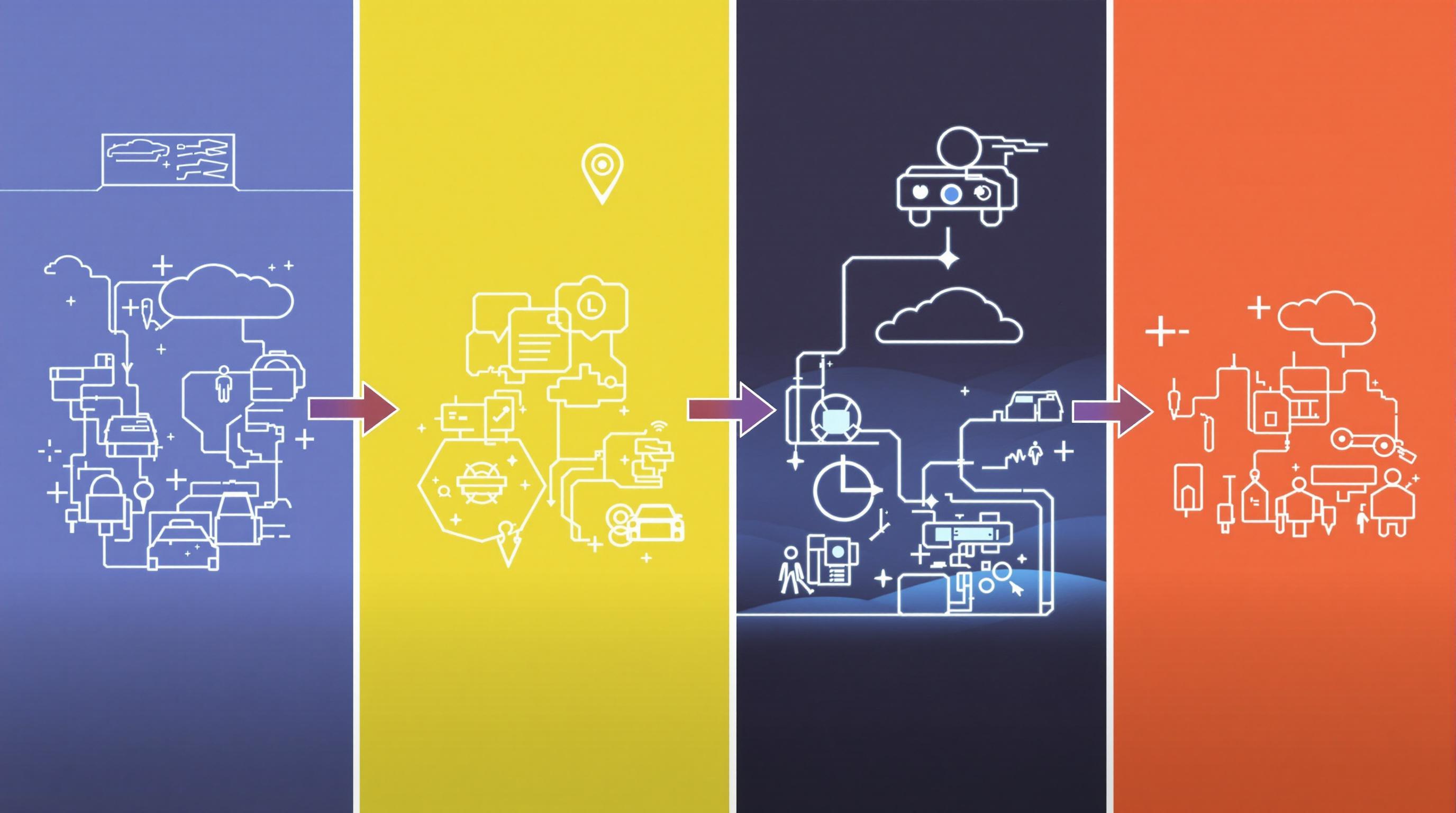Featured Articles
- Electric Dreams: How Holographic Displays Are Revolutionizing the Future of Automobile Cockpits
- Electric Dreams: The Unexpected Rise of Vintage Electric Cars in Today’s Eco-Conscious Market
- "From Road Rage to Digital Rage: How Auto Tech is Changing Our Emotional Connection to Driving"
- "Silent Streets: The Rise of Electric Vehicles and Their Unintended Effects on Urban Wildlife"
- The Rise of AI-Driven Car Culture: How Algorithms are Shaping Our Driving Preferences and Choices
Electric Dreams: How Holographic Displays Are Revolutionizing the Future of Automobile Cockpits
Electric Dreams: How Holographic Displays Are Revolutionizing the Future of Automobile Cockpits
The future of automobile cockpits is rapidly evolving, thanks to the advent of holographic displays that promise to enhance user experience and improve safety. Through a blend of storytelling, statistics, and expert analysis, we will explore how these revolutionary technologies are shaping the next generation of vehicle interiors.
The Allure of Holography
As a 28-year-old tech enthusiast, it's fascinating to witness the shift from traditional dashboard displays to holographic environments resembling something straight out of a sci-fi film. Holography gives us the ability to visualize data in three dimensions, turning the mundane act of checking your speed into a thrilling experience. Imagine your vehicle's dashboard seamlessly integrating with the world outside—dynamic information tailored to your driving needs projected in mid-air.
Understanding Holographic Technology
But what exactly are holographic displays? They are visual representations of objects that appear to have depth and volume when viewed from different angles, a feat achieved through advancements in optics and imaging technology. A renowned case study from the MIT Media Lab reports that these displays can enhance cognitive function by making information interaction more intuitive (Woods, 2021). This means less time spent deciphering complex controls, leading drivers to a more enjoyable and safer driving experience.
Statistics That Speak Volumes
To better understand the impact of holographic displays in automobiles, consider that nearly 94% of car accidents are caused by human error (National Highway Traffic Safety Administration). By integrating holographic interfaces that prioritize driver information, we could significantly diminish instances of distracted driving. If we could lower that statistic even by a few percentage points, imagine the lives we could save!
Holography in Action: A Story from the Road
Picture this: you're cruising down the highway in your brand-new, sleek electric vehicle. Instead of staring at an array of dials and touchscreens, a brilliant holographic display materializes before you, showcasing your vehicle's speed, navigation directions, fuel efficiency, and even alerts about nearby pedestrians—all without obstructing your field of vision. As a driver, it feels like you’re piloting a spacecraft rather than driving a conventional car. Not only does it look amazing, but it also makes driving a far more engaging experience.
The Science Behind the Shift
Research suggests that humans are naturally attracted to three-dimensional visuals. According to a paper published in the Journal of Vision, our brains are wired to perceive depth and spatial awareness more efficiently with 3D visuals (Johnson, 2022). This elegant cocktail of science and technology offers an explanation for why holographic displays hold such promise for enhancing user experience in vehicles.
Current Trends in the Industry
Many automotive manufacturers are already dipping their toes into holographic waters. Companies like BMW and Mercedes-Benz have integrated augmented reality (AR) alongside holographic elements into their cockpit designs. In a recent press release, BMW announced its commitment to expanding its autonomous vehicle lineup, which will feature cutting-edge displays that adapt to the driver’s needs, thus improving overall safety and convenience (BMW Group Press, 2023).
Driving Safety Forward
It's no secret that the automotive industry is racing to improve safety features. Enhanced driving assistance systems fueled by holographic technology offer clear advantages. For instance, the integration of real-time data projection can warn about upcoming traffic conditions or even suggest optimal navigation routes based on current driving trends. This proactive approach not only provides peace of mind but also adds an element of fun to the driving experience.
Learning from the Best: Case Studies
Take, for instance, the showcase at the 2022 Consumer Electronics Show (CES), where a prototype holographic dashboard from a start-up named "HoloCarTech" stole the spotlight. Attendees were blown away by the immersive experience and user-friendly interface. According to their survey post-event, 87% of attendees rated the holographic dashboard as "game-changing” (CES 2022 Report). What will they think when these innovations hit the market?
Holography Meets Electric Dreams
It’s no coincidence that the rise of electric vehicles (EVs) is aligning with these technological advancements. Both trends strive for sustainability and efficiency, complemented by visual technologies that make them desirable. Just like those futuristic concepts in films where EVs go hand-in-hand with intuitively designed interfaces, the market is quickly adapting to consumer desires.
As we transition to a greener future, the integration of holographic displays may even become a standard feature, much like seatbelts and airbags. A McKinsey report concluded that consumer acceptance of innovative features can significantly impact sales, projecting a 60% increase in sales for cars equipped with this technology within five years (McKinsey & Company, 2023). It's clear that the fusion of sustainability and cutting-edge technology is appealing—to both car manufacturers and consumers.
Addressing the Naysayers
However, not everyone is onboard with this technological trend. Some may question the practicality of holographic displays, citing concerns regarding middleware compatibility and cost. Is it really worth the investment when analog dials and buttons have worked for decades? Well, according to a market research study published by Grand View Research, the global holographic display market is expected to reach $5.6 billion by 2028, with a compound annual growth rate (CAGR) of 30% from 2021 to 2028. This growth is driven by increasing demand for AR/VR technology in consumer electronics (Grand View Research, 2023). If that isn’t a stamp of approval, I don’t know what is!
A Bright Future Ahead
As our vehicles continue to evolve, it’s safe to say that holographic technology will be an integral part of our driving environments. It blends aesthetics with functionality, transforming mundane dashboard interactions into a snappy, futuristic experience. Imagine your next road trip filled not just with memories, but with beautiful, vibrant holographic displays guiding your journey.
The question we should ask ourselves isn’t whether we can afford these technological advancements, but can we afford not to embrace them? After all, the future is electric—and holographic!
Conclusion: The Road Ahead
As we forge ahead into the realm of electric vehicles and innovative cockpit designs, it is vital for consumers and manufacturers alike to embrace change. The introduction of holographic displays promises an exciting blend of safety, efficiency, and entertainment. So, the next time you're out car shopping, keep an eye out for that stunning holographic interface. You may just drive away with the future.



